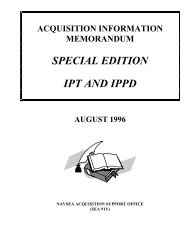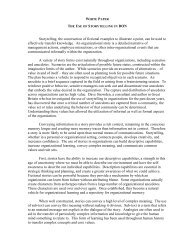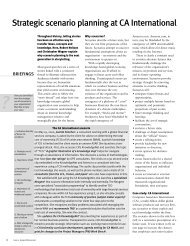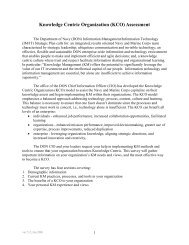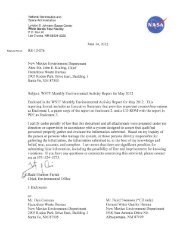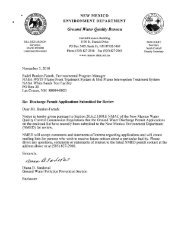NAVAL AVIATION SYSTEMS - NASA Wiki
NAVAL AVIATION SYSTEMS - NASA Wiki
NAVAL AVIATION SYSTEMS - NASA Wiki
You also want an ePaper? Increase the reach of your titles
YUMPU automatically turns print PDFs into web optimized ePapers that Google loves.
CHAPTER VII: PROGRAM AUTHORIZATION PROCESS<br />
PART B: ACQUISITION PLAN (AP)<br />
Purpose: The AP is the principal document for in-depth program planning, review, and oversight.<br />
Source Document/Guidance:<br />
1) Federal Acquisition Regulation (FAR) paragraphs 7.104 and 7.105.<br />
2) NAVAIRINST 4200.36, which provides guidance on preparation, coordination, and approval of APs for both<br />
NAVAIR and Naval Aviation PEO programs, is currently being updated and should be reissued in the fall of 1997.<br />
3) The ASN(RDA) Acquisition Planning Guide (APG) of April 1992 provides the criteria for when an AP is<br />
required and the AP format guidance.<br />
Critical Prior Events: APs will not be approved unless an approved Operational Requirements Document (or<br />
equivalent) exists. APs for ACAT programs can not be approved unless the program has an approved Acquisition<br />
Strategy which is approved by the milestone decision authority, although for some programs (particularly ACAT<br />
IIIs and IVs) the Acquisition Strategy and AP may be combined if the milestone decision authority allows.<br />
When Required:<br />
1) Development of the AP should begin as soon as the program need is identified, and preferably well in advance<br />
of the fiscal year in which contract award is necessary. An approved AP is absolutely required for contract award.<br />
See Events/Time Standards chart on page 8 of this Guide.<br />
2) APs are required for development programs with a total value of $5M or more, and production/service<br />
programs with a total value of $30M or more, or with a value of $15M or more in any fiscal year. Information<br />
Technology resources also fall under these thresholds.<br />
3) The AP is not required for a final buy out (documented last buy of material or services at a point in time, fully<br />
funded, for which no documented foreseeable requirement exists) or a one-time buy. Neither a multi-year contract<br />
nor a contract with options/phases are to be considered a final buy-out or a one-time buy.<br />
4) When Foreign Military Sales requirements cause a program to meet the above dollar thresholds, an AP is<br />
required.<br />
Responsibility:<br />
1) The program manager (i.e., the official who provides overall management, direction, control, resource<br />
utilization, and integration of a system or item to be purchased) is responsible for seeing that the AP is prepared<br />
and submitted for approval in a timely manner.<br />
2) In preparing the AP, the program manager must rely on his or her Integrated Program Team (IPT) members:<br />
contracting, engineering, logistics, security, business-financial, training, production management, counsel, and<br />
anyone else closely involved with the program. Where appropriate, the team should coordinate development of the<br />
draft AP with the Systems Engineering Department (AIR-4.1), the commonality and competition advocates (in<br />
AIR-4.10C), the acquisition streamlining advocate and data management focal point (both located in AIR-4.1C),<br />
AIR-3.6.1 for spares acquisition, and the Common Support Equipment Program Office (PMA-260).<br />
21



